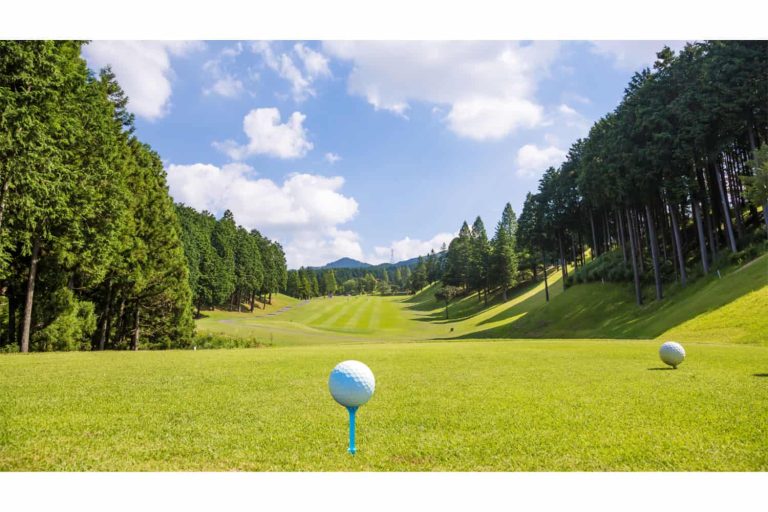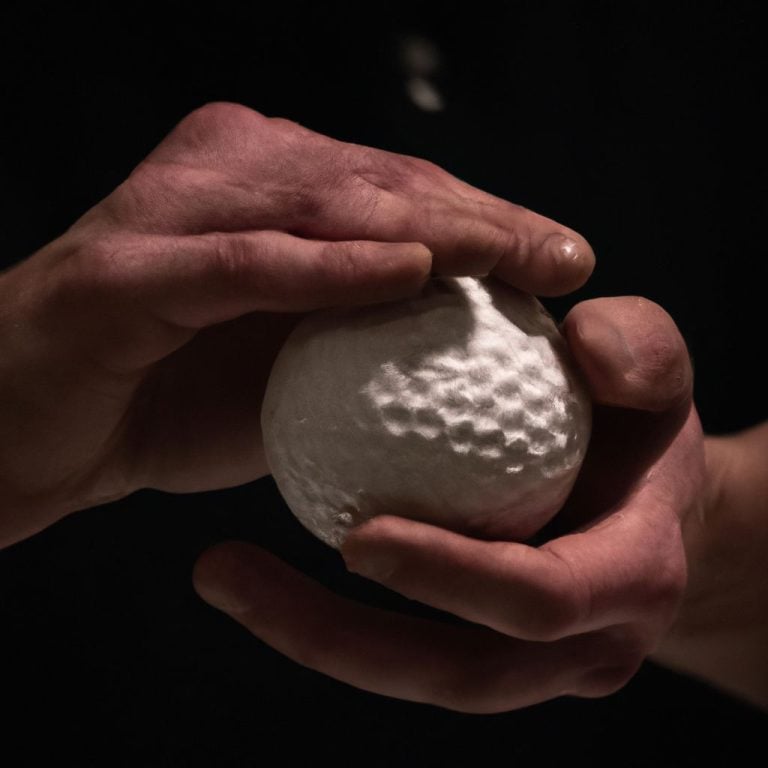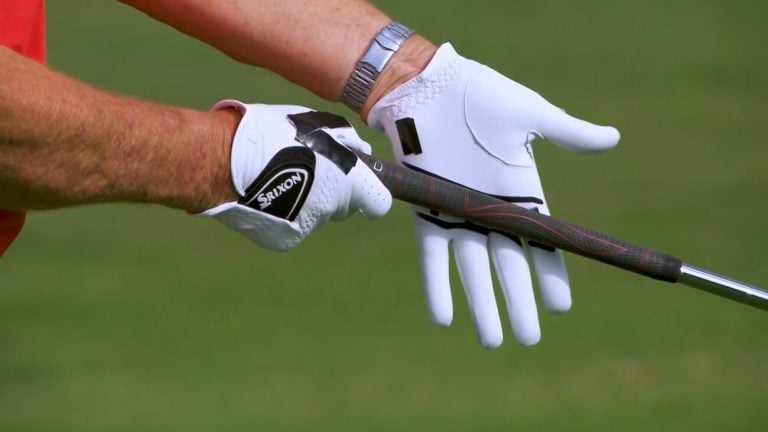Cracking the Code: Proven Techniques On How to Fix Your Golf Hook
Key Takeaway:
- A golf hook is a shot that curves sharply to the left for a right-handed golfer, caused by various factors including grip, swing path, and body alignment.
- Common causes of a golf hook include a strong grip, a too shallow swing path, and improper body alignment at setup.
- To fix a golf hook, adjustments in grip and setup, correcting swing path and body rotation, and utilizing practice methods and tools can be beneficial.
Understanding the Golf Hook
Understanding the Golf Hook: Delve into the world of golf hooks, from a detailed definition to understanding the characteristics that define this common golfing challenge. Unearth valuable insights and techniques to rectify your golf hook and improve your game. With a focus on accuracy and control, mastering the golf hook is essential for any golfer looking to enhance their performance on the course.
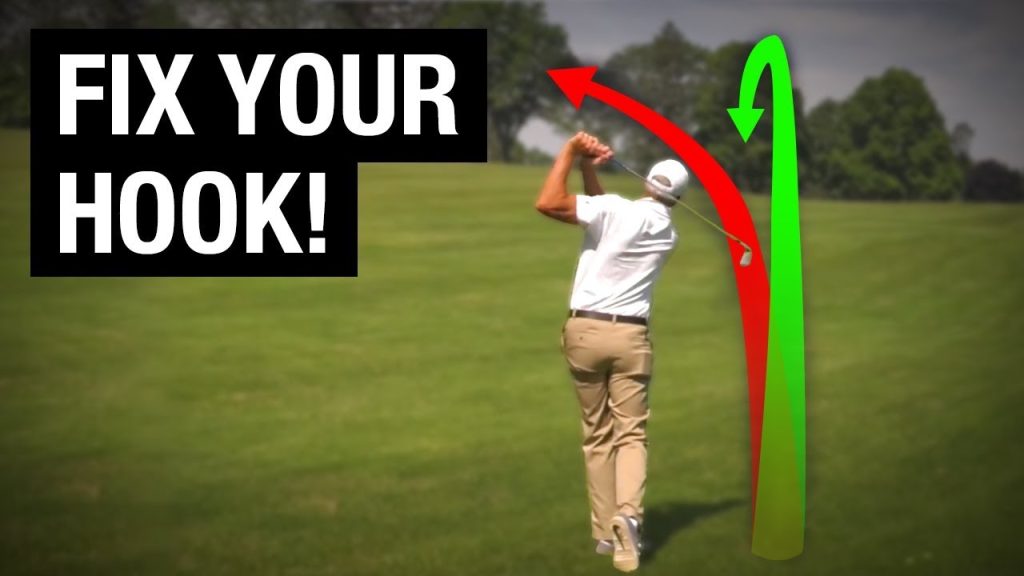
Definition of a golf hook
A golf hook is a shot that starts to the right of the target (for a right-handed golfer) and then curves sharply to the left. It’s characterized by a pronounced left-to-right spin on the ball, and its flight follows an exaggerated U-shape trajectory. This can result in a loss of distance and accuracy, as the ball ends up far off target. It’s frustrating for many golfers, as it can be difficult to control and correct.
To learn how to fix a hook shot, you need to understand what it is and its characteristics. Plus, you need to figure out what causes it. Causes can include grip-related, swing path-related, or body alignment-related issues.
Once you know what a hook shot is and its causes, you can take steps to make adjustments to your grip, setup, and swing path, as well as correct your body rotation. This can help you improve your game and make your ball go left when everyone else is going right!
Characteristics of a golf hook
A golf hook is a common term used in the sport for a ball that curves sharply. It goes right-to-left for right-handed players and left-to-right for left-handed players.

It has distinct characteristics. The ball flight has a pronounced curve, deviating significantly from the target line. The shot has a low trajectory, staying close to the ground.
Distance is lost due to the sidespin generated by an incorrect swing or clubface angle at impact. Accuracy is inconsistent and unpredictable. The ball usually lands well left for right-handers and well right for left-handers.
Hooks are more common with longer clubs like drivers and woods due to their longer shafts and swing arcs.
So, understanding these characteristics can identify and fix any issues with hooks during gameplay.
Causes of a Golf Hook
A golf hook can be frustrating, but understanding its causes can help you fix your game. Let’s dive into the different factors that contribute to a golf hook. From grip-related causes to swing path and body alignment, we’ll explore what may be behind your wayward shots on the course. So, let’s get to the root of the problem and improve your golf swing.
Grip Related Causes
A strong grip can have a big impact on the clubface angle at impact, leading to a hook shot for right-handed golfers. When hands are positioned too far to the right, the clubface is closed. To prevent this, golfers should adjust their grip to a more neutral position. This helps control the clubface and reduce rotation.
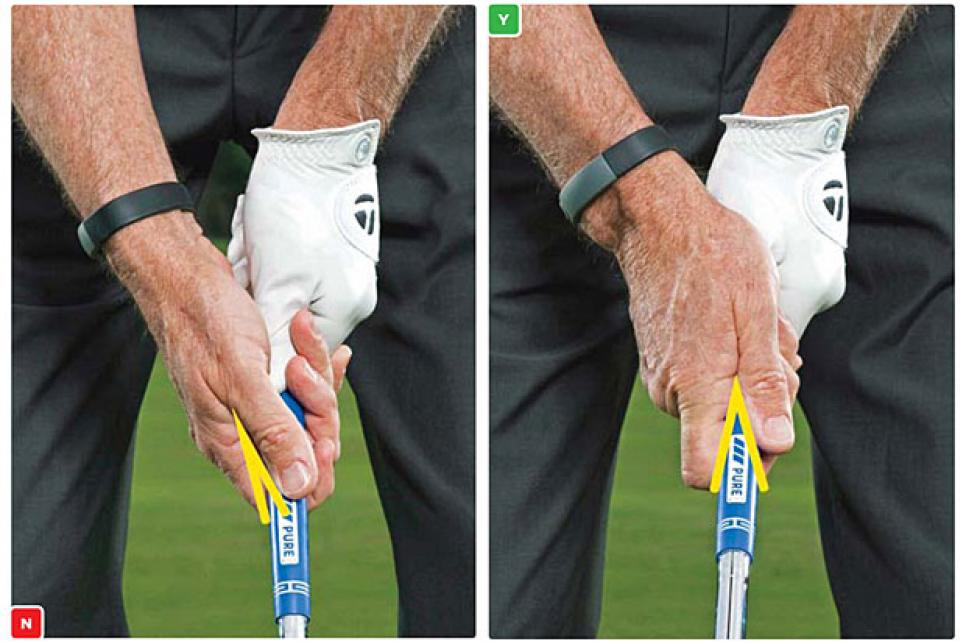
It’s important to remember that grip is not the only factor. Swing path and body alignment also affect shot direction and shape. So to reduce hooks, fix grip and these other aspects together.
Impact of a strong grip on clubface angle
A strong grip in golf can drastically alter the angle of the clubface at impact. A right-handed golfer’s hands are rotated to the right. This causes the clubface to close, leading to a left-to-right spin on the ball that curves sharply to the left.
To rectify this, it’s important to adjust the grip to a more neutral position. One way to do this is by placing the club handle diagonally across the fingers of both hands, with no rotation towards either side.
Making these changes can help control the clubface and stop it from closing or opening too much. It’s also good to practice drills that focus on swing path alignment. Swing on a slightly steeper path to straighten out the ball flight and minimize hooks.
Focusing on body rotation is also important to correct hooks caused by a strong grip. Rotate the hips and torso rather than just the arms and hands. This helps square up the clubface and reduce the closed position.
Knowing how a strong grip affects the clubface angle helps golfers improve their game. Adjusting the grip, setup, swing path, and body rotation can help fix hooks caused by this issue.
Adjusting grip to a more neutral position
To adjust the grip in golf for a more neutral position, changes must be made to improve control and accuracy of the shot.
Steps to do this:
- Hold the club with your left hand (for right-handed players) in a way that the grip runs diagonally across the base of your fingers towards your palm.
- Place your right hand on the club so creases between fingers & palm align.
- Put your right thumb slightly to the right of center on the grip.
- No excessive pressure or tension in either hand – make sure it’s relaxed & comfortable.
- V formed by thumb & index finger should point towards your right shoulder (for right-handed players).
- Take some practice swings before integrating the grip into your swing.
This can help fix issues caused by a strong grip, and improve performance. It’s important to also address swing path, body alignment, and setup when trying to fix a hook shot.
Swing Path Related Causes
The swing path of a golfer is an essential factor that decides the ball’s direction. To fix hook shots, it’s key to recognize and fix swing path issues.
A shallow swing path happens when the club comes from an outside-in angle. This causes a hook shot. These shots may happen due to incorrect body rotation or club positioning. Too much of an inside-out swing path can also lead to a hook shot, as it makes the clubface open at impact. Golfers should aim for an ideal swing path that gives consistent and accurate shots.
The body’s alignment plays a big role in the swing path. This may create a defective swing path and result in a hook shot. To solve this, players need to practice and focus on details. Doing drills to get proper body rotation and club positioning can help correct the hook-inducing swing path.
By understanding and fixing swing path issues, golfers can make improvements to their shots. It’s important to stay consistent and have a proper alignment while setting up. Practicing drills to correct shoulder rotation and body movement through impact will help bring the swing path back into alignment.
It needs time and effort to change any swing path issues. Dedicated practice with the right drills designed to address hooks will help get the desired results. By investing time to improve technique, golfers can correct their golf hook and enhance their performance on the course.
Unlock the mysteries of the hook shot by learning how the club path affects your game.
Explanation of club path and its effect on hook shot
Club path is the direction of the golf club’s swing. When a hook shot is hit, the swing path is usually too much from in to out. This causes the ball to curve and spin too much. This is due to an out-to-in swing path which results in a closed clubface at impact.
A hook shot is caused when the clubface is closed compared to the swing path at contact. A right-handed golfer will see the ball spin from right to left. The main contributor to this is an out-to-in swing path.
To prevent a hook, focus on improving your swing path. Try to make it neutral, like straight back and through, or slightly from inside-to-inside. Practice drills and consciously focus on each swing.
Body rotation is also important to avoid hooks. Proper rotation helps with an inside-out swing path and stops an excessive out-to-in motion. Pay attention to body rotation during the downswing and turn through contact with the correct sequence.
By understanding and addressing these elements of club path and body rotation, golfers can fix their hook shots and create consistent ball flights. Use training aids or props to practice and drills to target specific parts of the swing to help fix a hook shot. Take the plunge and swing for a hole-in-one!
Correcting a too shallow swing path
A too shallow swing path is an inside-to-outside angle which leads to hook shots. This issue stops golfers from hitting precise and controlled shots. To fix it, technique and body alignment need adjusting. Follow these steps:
- Grip must be neutral, palms facing each other. This will stop clubface rotation when hitting the ball.
- Shoulders and clubface must be parallel and square. This directs the club in the right plane.
- Takeaway must be inside and not too steep.
- Turn your body, not just arms, in the transition from backswing to downswing. Keep good balance.
- Training aids like rods and impact bags are great for visual feedback and muscle memory.
- Practice with drills that target the too shallow swing path.
It takes patience and practice, but with commitment, golfers can improve their swing path and ball flight. Refer to the article for extra resources and guidance from experts.
Body Alignment Related Causes
Align right, swing tight, avoid the golf hook fright! Proper body alignment is key to preventing a golf hook. When addressing the ball, make sure your feet are shoulder-width apart and aligned parallel to the target line. Your hips and shoulders should also be parallel to the target line. Additionally, the clubface should be square or slightly open.
To stop a closed clubface angle at impact, focus on grip and setup. Ensure a neutral grip, neither too strong nor too weak. A strong grip can cause a closed clubface at impact, resulting in a hook shot. Also, keep your shoulders open instead of closed. This will prevent excessive rotation and promote a more neutral clubface angle.
In conclusion, ensure proper body alignment when addressing the ball. Align feet, hips, and shoulders parallel to the target line. Pay attention to grip and shoulder alignment during setup. By doing so, you can improve your chance of hitting straighter shots and avoiding hooks.
Importance of proper setup and alignment
Golfers must pay attention to their grip, stance, posture, and alignment to the target for success on the course. Misalignment can cause unfavorable outcomes.
A strong grip can cause a hook shot. To prevent this, a neutral grip should be used.
Swing path is also important. If it is too shallow, it can lead to a hook. A more upright or outside-in path should be taken.
Body alignment is key. Feet, hips, and shoulders should be parallel or slightly open to the target line.
Even after setting up correctly, shoulder alignment should be maintained throughout the swing for consistent results.
Correcting closed clubface angle at impact
A closed clubface angle at impact can lead to a hook. This must be fixed to keep control of the ball and get the desired shot pattern. Adjusting grip and setup is one way to do it.

Here is a 4-step guide:
- Get a neutral grip – make sure your grip isn’t too strong. This can make the hands rotate too much and cause a closed clubface. Make the grip feel comfortable.
- Line up shoulders and clubface – both shoulders should be parallel to the target line and the clubface should be square or slightly open.
- Swing path – practice drills to make sure the swing path is correct.
- Body rotation – focus on body rotation during the downswing and through impact. This will keep the clubface square or open, preventing a hook.
Remember, each golfer is different. Get professional help for personalized tips. Also, get a qualified golf instructor for extra help and drills. Fixing a hook is all about grip, swing, and body alignment – so the ball doesn’t take an unexpected turn.
Techniques to Fix a Golf Hook
Looking to improve your golf swing and fix that pesky hook? This section will dive into the techniques you need to know. From adjusting your grip and setup to correcting swing path and body rotation, we’ll cover it all. Plus, we’ll explore practice methods and tools that can help you refine your skills on the golf course. Get ready to straighten out your shots and lower your scores. Let’s dig in!
Adjustments in Grip and Setup
Golfers must tweak their grip and setup to fix a hook shot. Adjusting your grip and setup before each swing will make your shots straighter with less spin.
For a neutral grip, the “V” formed by your thumb and index finger should point towards your trailing shoulder. This’ll prevent excess clubface rotation.
Align your shoulders and clubface so they’re parallel to the target line and square at address. If your shoulders or clubface are closed at setup, this can cause a closed face at impact and a hook.
Your spine angle is also important. The right angle will enable better rotation during the swing and stop you from casting or releasing the club early. This’ll help you avoid hooks.
Making these grip and setup adjustments can help you gain control over the clubface’s interaction with the ball. This leads to greater accuracy and consistency. Practice these adjustments and integrate them into your swing mechanics.
Steps to achieve a neutral grip
A neutral grip in golf is the hand and finger placement on the club that helps you get a square clubface at impact. It’s important for avoiding a hook shot, which is a shot that curves to the left for right-handed golfers. To get this grip, here are three steps:
- Hold the club with your left hand (right-handed golfers). The “V” between thumb and index finger should point to the right shoulder. Don’t grip too hard or too loose.
- Put your right hand on it. Make sure that the lifeline of your palm is aligned with the left thumb. Wrap the fingers around the club comfortably, no overlapping or too much pressure.
- Connect both hands. Interlock or overlap the right little finger with the left index finger (called interlock or overlap grip). This gives you control and stability during the swing.
It may vary based on individual preferences and physical attributes. You may have to experiment to find what works well for you.
Following these steps gives you an accurate golf shot and lessens the chance of the ball going off-target.
A-related detail: Your grip isn’t the only thing for achieving a neutral position. You must also keep your shoulders aligned and maintain a square clubface throughout your swing.
True fact: A proper grip is key for shot accuracy and performance in golf.
Ensuring proper shoulder and clubface alignment
For a successful golf swing, shoulder and clubface alignment is essential. This makes sure the clubface is square to the target when it hits the ball, resulting in more accurate shots. Alignment also enables a full range of motion and maximum power during the swing. Here’s how to do it:
- Shoulders parallel to target line – for an even swing and to avoid clubface closing/opening at impact.
- Clubface square to target line – no rotation or manipulation of clubface at address/swing.
- Relaxed grip pressure – tense grip can affect shoulder alignment.
- Alignment aids/training tools – for proper alignment.
- Body rotation/weight transfer – for shoulder alignment/stability/balance.
- Regular practice – for better shot execution.
Focus on these points for a well-aligned swing. Get it right and your accuracy and consistency will improve!
Correcting Swing Path and Body Rotation
Identifying the correct swing path & body rotation is major for correcting a golf hook. These factors can upgrade shot accuracy & consistency. Here’s a 5-step guide to help golfers:
- Analyze swing path: Check if the swing path is too shallow. Knowing the right swing path is key for making adjustments.
- Drill to improve: Golfers can practice better swing path alignment with drills. The drills focus on the correct movements & muscle memory for an accurate shot. Regular practice will help.
- Focus on body rotation through impact: Rotating hips, shoulders, & arms properly is essential to control clubface angle & prevent a hook shot. This rotational movement helps a more neutral ball flight trajectory.
- Maintain shoulder & clubface alignment: Ensure proper shoulder & clubface alignment during the whole swing. Deviations can cause a hook shot.
- Get feedback & continue practice: Professional instructors or experienced golfers can provide helpful insights into swing path & body rotation.
These steps can help golfers fix their swing path & body rotation, leading to better shots & fewer hooks. Every golfer’s technique may need different adjustments, so extra resources & references can offer personalized drills, tips, & techniques to fix a golf hook. With dedication & guidance, golfers can improve their swing path & body rotation, & enhance overall performance on the course.
Improving swing path alignment with drills
To master your swing, try these 4 steps:
- Utilize alignment rods for a visual guide along your desired swing path. Position the rod parallel to the target line, stretching from the target to the ball.
- Swing while keeping the clubhead along the rod. This drill develops muscle memory and encourages a regular swing path.
- Place an impact bag or mattress in front of you and focus on delivering an inside-to-outside swing path. This will reinforce proper swing path and avoid excessive rotation.
- Experiment with exaggerated drills, like placing a headcover or towel under your left armpit. This will keep connection between the arms and body, promoting an on-plane swing path.
These drills allow golfers to perfect their mechanics, leading to straighter ball flight patterns.
To understand swing path alignment, it’s important to recognize how grip pressure and body rotation play a role. Adjusting grip pressure can prevent excessive clubface rotation that leads to a hook shot.
By emphasizing body rotation rather than arm motion through impact, golfers can promote a natural release of the clubhead along the intended swing path.
Developing good habits requires practice. However, by using these drills and focusing on grip, body alignment, and swing mechanics, golfers can improve swing path alignment and get rid of the dreaded hook shot.
Move those hips and avoid the hook, because body rotation is key to perfecting your golf game!
Focusing on body rotation through impact
To eradicate a hook, follow these 6 steps focusing on body rotation through impact:
- Address the ball with proper setup and alignment – feet shoulder-width apart and parallel to the target line. This builds a solid base for rotation.
- Start your backswing by turning your torso, keeping your lower body stable.
- Remain balanced throughout the swing as you move into the downswing. This helps energy flow from upper body to lower body for rotational power.
- As you approach impact, rotate your hips towards the target. Keep your upper body and arms connected.
- At impact, rotate your upper body and hips to keep the clubface square. Don’t let it close prematurely, leading to a hook.
- Finish with a full rotational follow-through and maintain balance.
These steps, plus addressing other causes such as grip, swing path, and body alignment, help you have an improved, consistent golf swing devoid of hooks. Your dreams of hook-free golf can come true with the right practice methods and tools!
Practice Methods and Tools
Golf needs various methods and tools to enhance skills and tackle common issues such as a golf hook. Use these tools and methods efficiently, and golfers can improve swing path, body alignment, and grip to reduce hooks.
- Utilizing props: Golfers gain from using props and tools during practice to raise swing mechanics. These may be alignment sticks, impact bags, or training aids to target the causes of a hook.
- Drills: Practicing drills can help golfers address the root of a hook shot. These drills may focus on better alignment or body rotation through impact.
Fixing a hook requires consistent practice and experimenting with various techniques. By using these methods and the right tools, golfers can learn more about their swing mechanics and correct the factors causing their hook shots.
Utilizing props and tools for swing improvement
Improve your golf swing with props and tools! Alignment sticks are especially useful. They help golfers visualize and get into the correct setup, which leads to better body positioning and clubface alignment. Swing trainers are also great for improvement. Weighted clubs and sensors let you develop a consistent swing motion and give feedback on tempo, sequencing, and release.
Mirror and video analysis can also help. Look at your form and find any flaws in your movements. The visual feedback lets you have targeted practice sessions to correct your swing faults. Golf balls with markings will help you align the clubface correctly throughout your swing. Plus, golf simulators let you practice indoors and give you instant feedback on shot accuracy and ball trajectory.
Grip-improvement training aids also exist. These aim to improve grip strength, position, and consistency. They reinforce proper grip mechanics and help prevent hooks.
But you still need a disciplined practice routine. Focus on deliberate repetition of correct techniques – don’t just hit balls at the driving range. Commit to regular practice sessions to address swing flaws. Get guidance from experienced professionals or use resources to learn how to fix a golf hook. Exploring different perspectives and techniques can help you make progress.
Today, incorporate these props and tools into your practice. Experience the transformative effects they can have on your swing. Enhance your skills, achieve greater consistency, and fix that hook with the recommended drills! You’ll be swinging straighter than a compass needle.
Recommended drills to fix a hook
To fix a hook, drills are suggested. These drills address grip, swing path, and body alignment. The goal is to straighten the ball flight.
One drill is to use a neutral grip. This means adjusting the hands on the club to be neither too strong nor too weak. This helps control the clubface angle and stop a hook shot.
Shoulders and clubface must be aligned with the target. Squared shoulders and a square clubface prevent a closed clubface angle when striking the ball.
To fix swing path issues, practice with an alignment stick. Place it parallel to your target line to see and keep the proper swing path. Swinging too shallow can cause hooks.
Focus on body rotation through the ball. Rotational drills or core strength exercises help the arms and hands release naturally. Training aids can also help.
It’s important to understand ball flight laws and get tailored advice from instructors. Intentional practice to fix specific aspects of the swing is key for success.
Some Facts About How To Fix a Golf Hook:
- ✅ To fix a hook, adjust the right hand to a more neutral position and place the right index finger in a “trigger” position under the handle. (Source: Golf Digest)
- ✅ Avoid getting stuck in your swing by keeping the arms and club in front of the chest throughout the swing. (Source: Golf.com)
- ✅ Recreational golfers often struggle with slicing the ball, but some players have the opposite problem of hooking the ball. (Source: Golf Insider UK)
- ✅ A hook is caused by a closed clubface relative to the swing path at impact, which can result from a strong grip, lack of body rotation, or poor connection between the arms and body. (Source: HackMotion)
- ✅ Working on grip, swing path alignment, clubface angle, and body movement can help fix a golf hook. (Source: Golf Monthly)
FAQs about How To Fix A Golf Hook
How can I fix a hook in golf?
To fix a hook in golf, you can try adjusting your grip to a more neutral position, turning your right hand towards the target and placing the right index finger in a “trigger” position under the handle. Additionally, focus on keeping the upper body from obstructing the club’s path to the ball and maintaining the same relationship between the upper body, arms, and club throughout the swing.
What causes a hook in golf?
A hook in golf is typically caused by a closed clubface at impact, where the clubface angle is not square to the swing path. Other factors that can make a hook more pronounced include a strong grip, lack of body rotation, and poor connection and timing between the arms and body.
What are some tips to avoid hooking the ball?
To avoid hooking the ball, check your grip to ensure it is not too strong and work on a more neutral grip. Focus on initiating the downswing by having the lead arm move away from the lead shoulder and incorporating early body rotation. Consider working the ball to the right a little bit to eliminate hooks altogether.
Are there any drills or practice methods to fix a hook?
Yes, there are several drills and practice methods you can try to fix a hook. One drill involves using props like a golf tee to maintain the correct grip pressure, a hula hoop to practice the motion of the swing at home, and pinning one arm to the chest while swinging with the other arm to keep the lead arm in sync with the body.
Can using a swing training device help with fixing a hook?
Yes, using swing training devices like Swing Align can help with fixing a hook by providing feedback on grip, alignment, and synchronization of the arms and body. These devices can assist in improving your golf swing and reducing hooks.
What are some common mistakes that lead to hooking the ball?
Some common mistakes that lead to hooking the ball include having a strong golf grip, getting stuck and flipping the club, and poor wrist action. These mistakes can cause the clubface to close too quickly and result in hooks. By addressing these errors, you can learn to fix your hook and improve your golf game.



